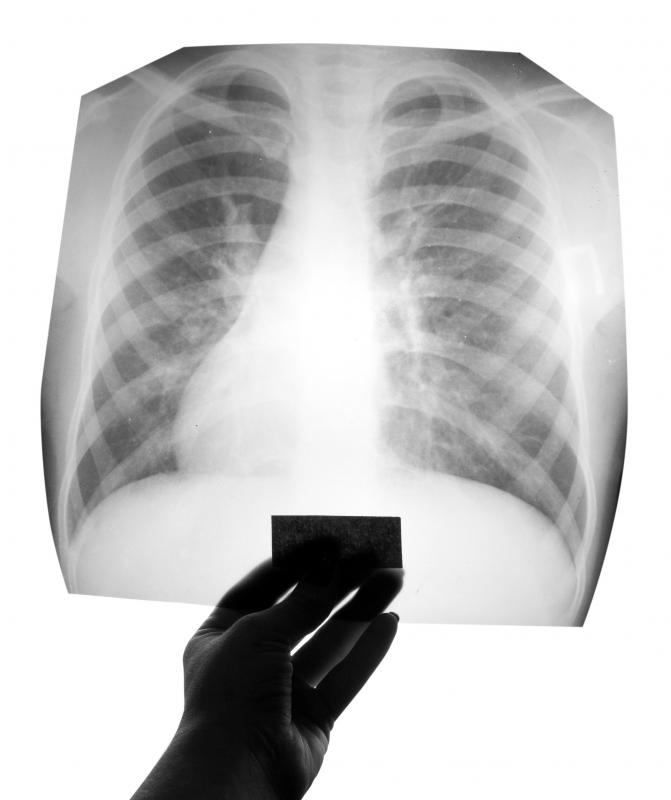At WiseGEEK, we're committed to delivering accurate, trustworthy information. Our expert-authored content is rigorously fact-checked and sourced from credible authorities. Discover how we uphold the highest standards in providing you with reliable knowledge.
What is an Acute Lung Injury?
An acute lung injury (ALI) is a condition characterized by the sudden onset of significant hypoxemia and the presence of diffuse pulmonary infiltrates as seen on chest X-ray, in the absence of cardiac failure. ALI is also called non cardiogenic pulmonary edema because of the lack of associated cardiac abnormalities. Acute respiratory distress syndrome (ARDS) refers to severe ALI. The underlying mechanisms behind an acute lung injury and ARDS include an increase in the permeability of blood vessels in the lungs, death of pulmonary epithelial and endothelial cells, and inflammation. An ALI usually results from conditions that caused either direct types of injuries to the lung or from systemic conditions, such as sepsis.
Both injury and systemic issues can cause ALI. Direct injuries that can lead to an acute lung injury include mechanical trauma to the chest, near drowning, fractures that lead to marrow or fat embolism, burns, inhaled irritants, and ionizing radiation. Systemic conditions that can result in lung injury include sepsis, disseminated intravascular coagulation, multiple blood transfusions, and severe allergic reactions. Most cases of ARDS occur among patients who have sepsis, gastric aspiration, diffuse pulmonary infections like pneumonia, and head and other bodily injuries due to trauma.

Despite differences in the underlying condition, cases of acute lung injury occur due to damage to the endothelial and epithelial cells. Endothelium refers to the inner lining of the capillaries, while epithelium refers to the lining of the alveolar sacs. Normally, these two layers form a barrier that keeps the alveolar-capillary membrane intact.
With injury, an inflammatory response is activated, leading to the release of various pro-inflammatory substances and the activation of inflammatory cells. This leads to the destruction of the alveolar-capillary membrane, causing capillary leakage, alveolar flooding, decreased amount of lung surfactant, and formation of hyaline membranes. These hyaline membranes form due to the extravasation of protein-rich fluid that traps dead epithelial cells, and are characteristic in the biopsy findings of an acute lung injury.

The symptoms that indicate an ALI are profound difficulty of breathing, or dyspnea, as well as increased respiratory rate, or tachypnea. These symptoms are then followed by the bluish discoloration of the skin and extremities called cyanosis. Measurement of blood gases and ventilation-perfusion ratios would show hypoxemia, respiratory failure, and low lung compliance. The low amount of oxygen in the blood or hypoxemia is typically unresponsive to oxygen therapy. On radiographic examination of the chest, both lungs have diffuse infiltrates, and some parts may become stiff and collapsed.

Treatment of this lung injury generally involves mechanical ventilation, supportive care, and treatment of the underlying cause. Chronic ARDS cases without infection may benefit from corticosteroids. Death among patients who have an acute lung injury is usually secondary to uncontrolled sepsis and failure of multiple organ systems.
AS FEATURED ON:
AS FEATURED ON:













Discuss this Article
Post your comments